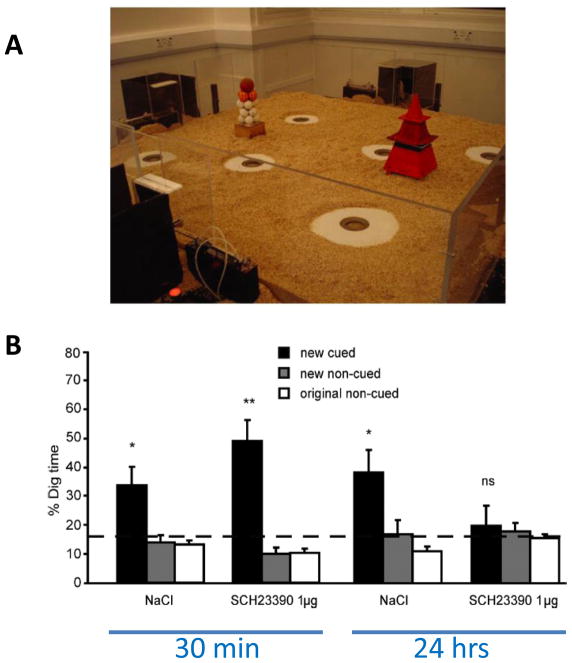Fig. 2.
A D1 antagonist blocks long-term memory but not early memory (30min) for novel episodic-like information in rats. A In this event-arena apparatus, six sand wells are available to which the rat can run to collect food. Animals are trained over several sessions to learn six flavor/sand-well associations. After acquisition, they are given one trial of a new flavor-location paired associate. Memory recall is measured as time spent digging (% Dig time) at the correct location for a given flavor (new cued). The primary measure of memory recall is calculated as the proportion of time spent at the cued location relative to the average time at the non-cued locations for the originally acquired flavor locations (original non-cued) and the non-cued location of the other novel flavors introduced during a training day (new non-cued). B The D1 antagonist SCH23390 given 20 minutes prior to the encoding of the new flavor/location paired associate has no effect on short-term memory (tested 30 minutes after the last training trial) but eliminates long-term memory (24 hours later), as compared to vehicle control (NaCl). Reprinted with permission from [26].

